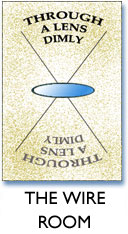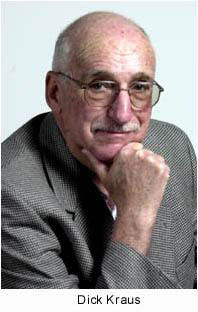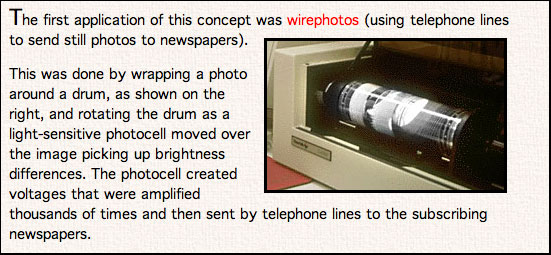|
|
|
|
|
THROUGH
A LENS DIMLY Newsday had a regular wire operator five nights a week. We only published 6 days a week, back then. There was no Sunday Paper. So, the new man had to spend Friday nights in that tiny, hot, claustrophobic cubicle. I was the new man in the early '60's. The rest of the week, I was a shooter. But, oh how I hated Fridays. My shift would start at 5 PM and end at 1:30 AM. Seven and a half hours of "Chirp, Chirp, Chirp." Plus the stink of the chemicals that pervaded the room.
I always had difficulty trying to load the paper when both machines finished at the same time. You only had a limited amount of time before they would start up again, and under that kind of pressure, my fingers all became thumbs. There were speakers that were part of each wirephoto receiver and voices would come through them from the AP or UPI operators at their respective headquarters. They would announce a series of coded numbers marking the number of the next transmission, the location of where the photo originated and a brief description of said photo. "AP2476-032701 from Berkely, California showing anti-war protesters on campus. Ten seconds of rolling white." Rolling white was some technical mumbo jumbo which meant that the photo on the drum of their transmitter was spinning and their lens was set on a white border section and would be transmitting a level which would show up on a meter on my machine. I had to turn a dial to set a needle on my gauge to match the setting they were transmitting. If I failed to do so, my photo would be too dark or too light. Doncha love it? Once I had it set, I had to punch a button to synchronize the rotation of my drum to theirs. If I failed to get that right, my photo might be split and unusable. If that happened, I had to phone them and ask for a re-transmission. They didn't like that. I always felt that I was under the gun and the responsibility was overwhelming. I'd much rather have been standing in a blizzard at a police shoot-out with bullets whizzing over my head. I don't know how Vince, our regular wire operator, could manage to avoid drowning himself in his tray of stale hypo. He would leave his post, regularly, and go take a piss or get some chow in the company cafeteria. He would miss countless transmissions and nobody ever seemed to care. Whenever I missed one, I had the Newsdesk screaming at me for the missing photo which was supposed to be for the front page. Jeez. As if all of this wasn't enough, I was the last warm body left in the Photo Department after midnight. If anything broke after that, I was expected to run out and cover it. One particularly harrowing night, after I had shut down those goddam machines for the night, The Picture Editor phoned and told me to come out to his desk. I went out to see him. "There was a house burglary several hours ago. A 93 year old widow in Westbury had some goon with a gun force his way through the front door. He tied her up and ransacked the house. Get over there and get me a picture of the old lady." "OK," I said. "It's pretty late, though. Does she know that I'm coming and do you know if she'll agree to let me take her picture?" "Shit, Kraus," he bellowed. "What the Hell do you think? I didn't call her and of course she isn't gonna let you take her picture. Just bang on the door and when she answers, pop a shot." OK, they didn't have the stalking and privacy laws that they have today. But, I'm certain that I would be violating something. More than that, this asshole wanted me to "pop a shot." Here was a 93 year old woman, living alone, who had just been violated by an armed intruder. If she even answered the door and had a blinding flash appear out of the darkness from her doorstep, who was going to jump start her heart? Of all the stupid, insensitive clods. I said as much to the editor. He said, "For cryin' out loud, Kraus. You're supposed to be a photojournalist. Just go do it!" There was no sense in arguing with him. Westbury was a 10 minute drive. I pulled up in front of the house. I sat in the car for about ten minutes and then found a pay phone and called in. "The house is dark and no one answered the door. I waited about ten minutes and tried again. No answer. I'm going home." Nothing more was ever said. Ahhh, but I digress. One day I was not the new kid on the block. We had hired new staff photographers and I no longer had to suffer the hot, stuffy, claustrophoc, chirping wire room. Soon after, the wire machines were removed and the room was converted into another film processing room because the wire services had developed automatic laser wire photo equipment that spat out already processed prints. Later on, the computer age dawned and now wire photos are delivered right to our newsroom computers where editors have access to a steady stream of incoming photos from all over the world. How about that? During the recent tidal wave disaster in the Indian Ocean, someone snapped a photo on his cell phone camera and in a matter of minutes, editors around the world were tearing up their page one layouts to include this shot. Newspapering will never be the same. Now I kind of miss the Chirp, Chirp, Chirp.
|
|||



